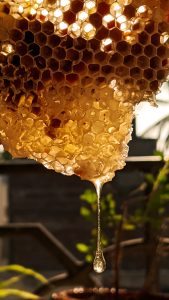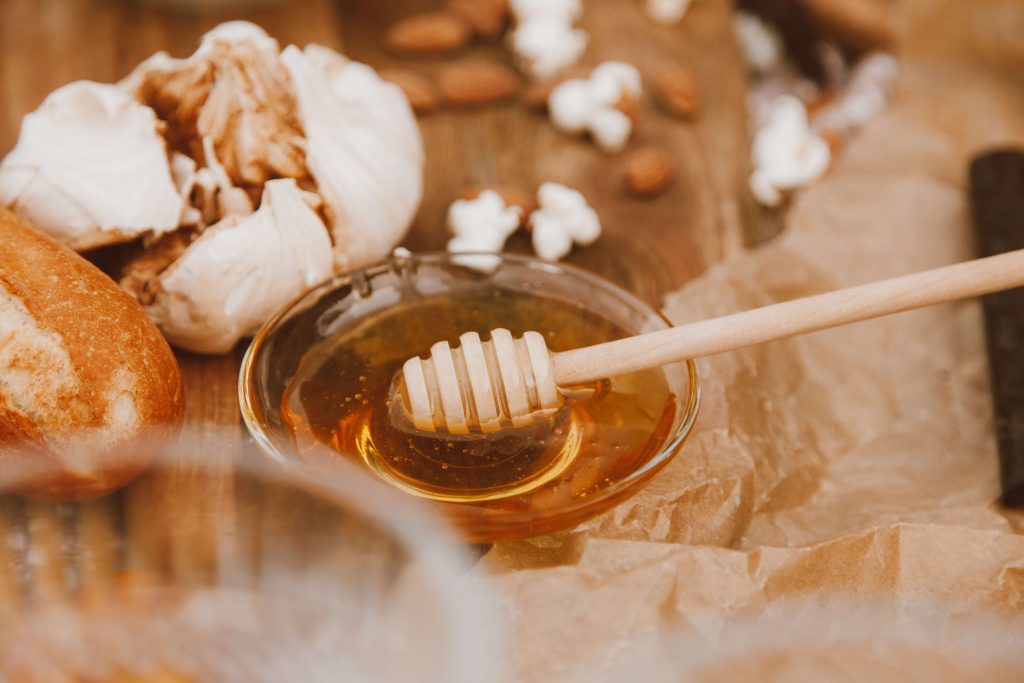What is honey?
Honey is the only food produced by insects! It’s a sweet, viscous substance produced by bees and other insects, mainly from the nectar of flowers and plants. It has multiple nutritional and medicinal properties.

How is honey made?
Bees collect sugary nectar from flowers and store it in their “honey stomachs.” In this specialized stomach, the bees’ digestive enzymes, along with gastric acid, break down complex sugars into simple sugars, glucose, and fructose. When the collecting bee returns to the hive, it passes this pre-digested nectar to another worker bee. This process is repeated until the honey reaches storage quality. Bees place honey in honeycomb cells that are left unsealed. Then they constantly flap their wings to circulate air and evaporate the water from the honey to a content of around 17-18%, raising the sugar concentration and preventing it from spoiling. Then, the bees seal the cells with wax to seal them.
Nutritional properties
Honey is a good source of energy, vitamins, and minerals. It’s rich in fructose and glucose, two simple sugars that the human body absorbs easily. It also contains small amounts of vitamins, minerals, and antioxidants.
Medicinal properties
Honey has antibacterial, anti-inflammatory, and antioxidant properties. It has been shown to help treat a variety of conditions, including:
- Wounds
- Infections
- Cough
- Sore throat
- Diarrhea
- Allergies
Tips for buying honey
- Choose honey from a local source.
- Look for raw or unprocessed honey.
- Read the label to make sure the honey is pure.




